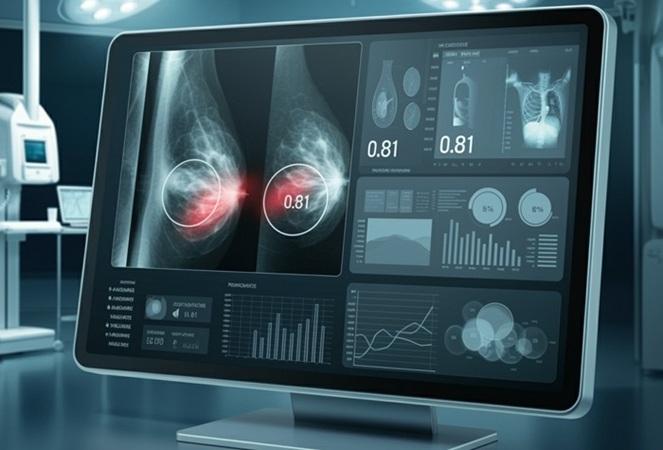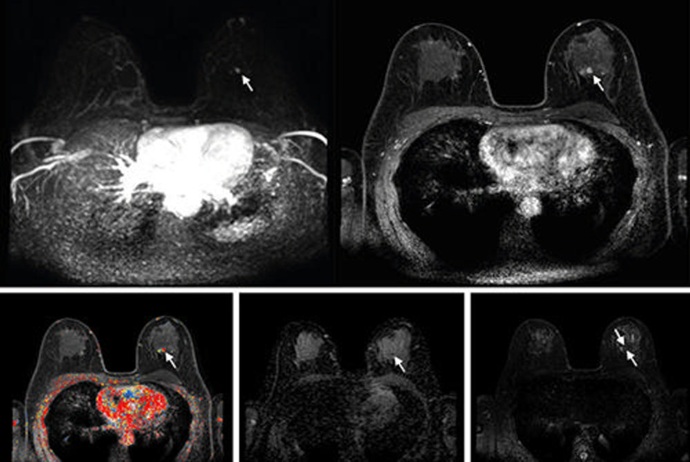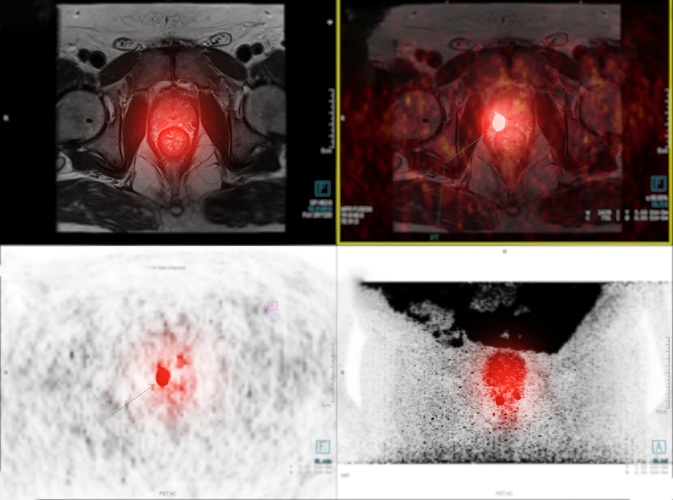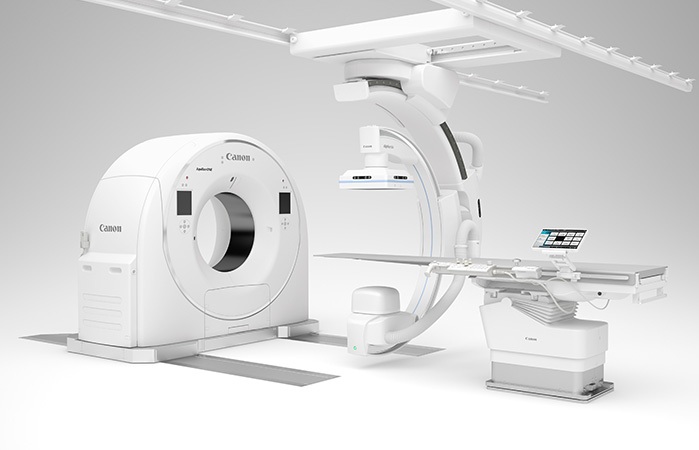Singing Supports Ultrasound Screening for Thyroid Cancer
|
By MedImaging International staff writers Posted on 28 Jan 2021 |

Image: A volunteer sings while holding a linear ultrasound probe to measure VP-E (Photo courtesy of Steve Beuve/ Tours University)
A new study suggests that a shear wave acoustic field generated naturally by the human voice can be used to measure the elasticity of thyroid tissue.
Developed by researchers at Université de Tours (France), Centre Hospitalier Universitaire de Dijon-Bourgogne (France), and Université Bourgogne Franche-Comté (France), vocal passive elastography (V-PE) is designed to measure tissue elasticity from physiological noise generated by body vibrations. In the thyroid, this is mainly due to carotid pulsation, which is in the 1–10 Hz bandwidth and is located right next to the gland. To decrease shear wavelength and increase signal to noise ratio (SNR), a complex shear wave field can be created by using vocal tract vibrations.
The nature of the sound can be modified by changing pitch. Thus, singing and maintain an “eeee” note (approximately the frequency of D3, or 150 hertz), shear wave is generated that can be used to identify abnormally stiff thyroid gland areas that can be indicative of cancer. A correlation-based algorithm then computes a shear wave velocity map that is then super-positioned onto a B-mode ultrasound image of the thyroid, with a pixel resolution of 150 × 150 μm2. The values obtained are in good agreement with comparative shear wave elastography (SWE) ultrasound measurements. The study was published on January 12, 2021, in Applied Physics Letters.
“The singing vibrates the patient's trachea, which in turn produces vibrations throughout the thyroid, allowing the clinician to use an ultrafast frame rate to track changes in shear-wave velocity, giving us information about mechanical properties of soft tissues,” said lead author Steve Beuve, PhD, of the Université de Tours. “Developing noninvasive methods would reduce the stress of patients during their medical exams. Having to sing during a medical exam can perhaps help release some of the nervous tension even more.”
Thyroid nodular disease is one of the most widespread endocrine disorders, but although fine needle aspiration guided with ultrasound examination is commonly used to detect malignant tumors, only 5% of thyroid cancers are detectable with this technique. As a result elastography has been proposed to detect cancerous nodules, with a nodule whose Young's modulus exceeds 65 kPa usually considered suspicious. But one of the problems with such an approach is that the thyroid SNR is drowned out by natural background noise from nearby organs.
Related Links:
Université de Tours
Centre Hospitalier Universitaire de Dijon-Bourgogne
Université Bourgogne Franche-Comté
Developed by researchers at Université de Tours (France), Centre Hospitalier Universitaire de Dijon-Bourgogne (France), and Université Bourgogne Franche-Comté (France), vocal passive elastography (V-PE) is designed to measure tissue elasticity from physiological noise generated by body vibrations. In the thyroid, this is mainly due to carotid pulsation, which is in the 1–10 Hz bandwidth and is located right next to the gland. To decrease shear wavelength and increase signal to noise ratio (SNR), a complex shear wave field can be created by using vocal tract vibrations.
The nature of the sound can be modified by changing pitch. Thus, singing and maintain an “eeee” note (approximately the frequency of D3, or 150 hertz), shear wave is generated that can be used to identify abnormally stiff thyroid gland areas that can be indicative of cancer. A correlation-based algorithm then computes a shear wave velocity map that is then super-positioned onto a B-mode ultrasound image of the thyroid, with a pixel resolution of 150 × 150 μm2. The values obtained are in good agreement with comparative shear wave elastography (SWE) ultrasound measurements. The study was published on January 12, 2021, in Applied Physics Letters.
“The singing vibrates the patient's trachea, which in turn produces vibrations throughout the thyroid, allowing the clinician to use an ultrafast frame rate to track changes in shear-wave velocity, giving us information about mechanical properties of soft tissues,” said lead author Steve Beuve, PhD, of the Université de Tours. “Developing noninvasive methods would reduce the stress of patients during their medical exams. Having to sing during a medical exam can perhaps help release some of the nervous tension even more.”
Thyroid nodular disease is one of the most widespread endocrine disorders, but although fine needle aspiration guided with ultrasound examination is commonly used to detect malignant tumors, only 5% of thyroid cancers are detectable with this technique. As a result elastography has been proposed to detect cancerous nodules, with a nodule whose Young's modulus exceeds 65 kPa usually considered suspicious. But one of the problems with such an approach is that the thyroid SNR is drowned out by natural background noise from nearby organs.
Related Links:
Université de Tours
Centre Hospitalier Universitaire de Dijon-Bourgogne
Université Bourgogne Franche-Comté
Latest Ultrasound News
- Disposable Ultrasound Patch Performs Better Than Existing Devices
- Non-Invasive Ultrasound-Based Tool Accurately Detects Infant Meningitis
- Breakthrough Deep Learning Model Enhances Handheld 3D Medical Imaging
- Pain-Free Breast Imaging System Performs One Minute Cancer Scan
- Wireless Chronic Pain Management Device to Reduce Need for Painkillers and Surgery
- New Medical Ultrasound Imaging Technique Enables ICU Bedside Monitoring
- New Incision-Free Technique Halts Growth of Debilitating Brain Lesions
- AI-Powered Lung Ultrasound Outperforms Human Experts in Tuberculosis Diagnosis
- AI Identifies Heart Valve Disease from Common Imaging Test
- Novel Imaging Method Enables Early Diagnosis and Treatment Monitoring of Type 2 Diabetes
- Ultrasound-Based Microscopy Technique to Help Diagnose Small Vessel Diseases
- Smart Ultrasound-Activated Immune Cells Destroy Cancer Cells for Extended Periods
- Tiny Magnetic Robot Takes 3D Scans from Deep Within Body
- High Resolution Ultrasound Speeds Up Prostate Cancer Diagnosis
- World's First Wireless, Handheld, Whole-Body Ultrasound with Single PZT Transducer Makes Imaging More Accessible
- Artificial Intelligence Detects Undiagnosed Liver Disease from Echocardiograms
Channels
Radiography
view channel
AI Algorithm Uses Mammograms to Accurately Predict Cardiovascular Risk in Women
Cardiovascular disease remains the leading cause of death in women worldwide, responsible for about nine million deaths annually. Despite this burden, symptoms and risk factors are often under-recognized... Read more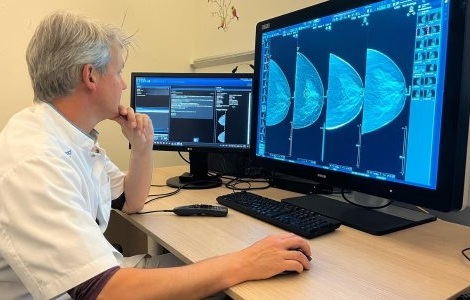
AI Hybrid Strategy Improves Mammogram Interpretation
Breast cancer screening programs rely heavily on radiologists interpreting mammograms, a process that is time-intensive and subject to errors. While artificial intelligence (AI) models have shown strong... Read moreMRI
view channel
AI-Assisted Model Enhances MRI Heart Scans
A cardiac MRI can reveal critical information about the heart’s function and any abnormalities, but traditional scans take 30 to 90 minutes and often suffer from poor image quality due to patient movement.... Read more
AI Model Outperforms Doctors at Identifying Patients Most At-Risk of Cardiac Arrest
Hypertrophic cardiomyopathy is one of the most common inherited heart conditions and a leading cause of sudden cardiac death in young individuals and athletes. While many patients live normal lives, some... Read moreNuclear Medicine
view channel
PET Tracer Enables Same-Day Imaging of Triple-Negative Breast and Urothelial Cancers
Triple-negative breast cancer (TNBC) and urothelial bladder carcinoma (UBC) are aggressive cancers often diagnosed at advanced stages, leaving limited time for effective treatment decisions.... Read more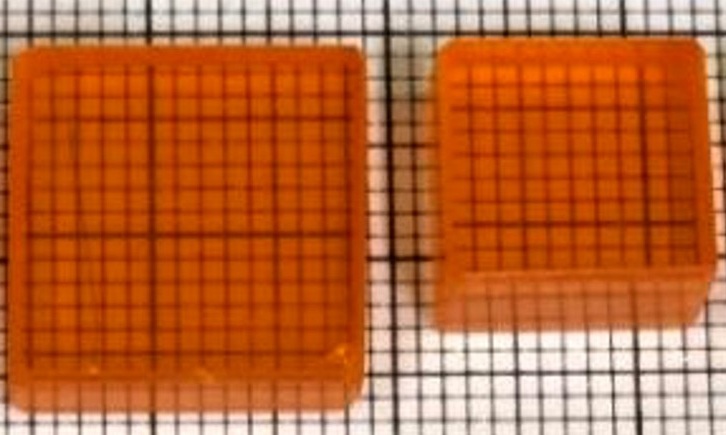
New Camera Sees Inside Human Body for Enhanced Scanning and Diagnosis
Nuclear medicine scans like single-photon emission computed tomography (SPECT) allow doctors to observe heart function, track blood flow, and detect hidden diseases. However, current detectors are either... Read more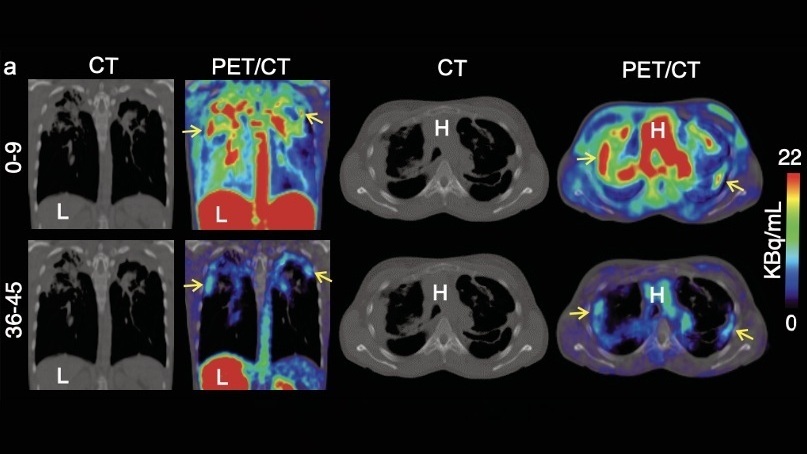
Novel Bacteria-Specific PET Imaging Approach Detects Hard-To-Diagnose Lung Infections
Mycobacteroides abscessus is a rapidly growing mycobacteria that primarily affects immunocompromised patients and those with underlying lung diseases, such as cystic fibrosis or chronic obstructive pulmonary... Read moreGeneral/Advanced Imaging
view channel
New Ultrasmall, Light-Sensitive Nanoparticles Could Serve as Contrast Agents
Medical imaging technologies face ongoing challenges in capturing accurate, detailed views of internal processes, especially in conditions like cancer, where tracking disease development and treatment... Read more
AI Algorithm Accurately Predicts Pancreatic Cancer Metastasis Using Routine CT Images
In pancreatic cancer, detecting whether the disease has spread to other organs is critical for determining whether surgery is appropriate. If metastasis is present, surgery is not recommended, yet current... Read moreImaging IT
view channel
New Google Cloud Medical Imaging Suite Makes Imaging Healthcare Data More Accessible
Medical imaging is a critical tool used to diagnose patients, and there are billions of medical images scanned globally each year. Imaging data accounts for about 90% of all healthcare data1 and, until... Read more
Global AI in Medical Diagnostics Market to Be Driven by Demand for Image Recognition in Radiology
The global artificial intelligence (AI) in medical diagnostics market is expanding with early disease detection being one of its key applications and image recognition becoming a compelling consumer proposition... Read moreIndustry News
view channel
GE HealthCare and NVIDIA Collaboration to Reimagine Diagnostic Imaging
GE HealthCare (Chicago, IL, USA) has entered into a collaboration with NVIDIA (Santa Clara, CA, USA), expanding the existing relationship between the two companies to focus on pioneering innovation in... Read more
Patient-Specific 3D-Printed Phantoms Transform CT Imaging
New research has highlighted how anatomically precise, patient-specific 3D-printed phantoms are proving to be scalable, cost-effective, and efficient tools in the development of new CT scan algorithms... Read more
Siemens and Sectra Collaborate on Enhancing Radiology Workflows
Siemens Healthineers (Forchheim, Germany) and Sectra (Linköping, Sweden) have entered into a collaboration aimed at enhancing radiologists' diagnostic capabilities and, in turn, improving patient care... Read more













